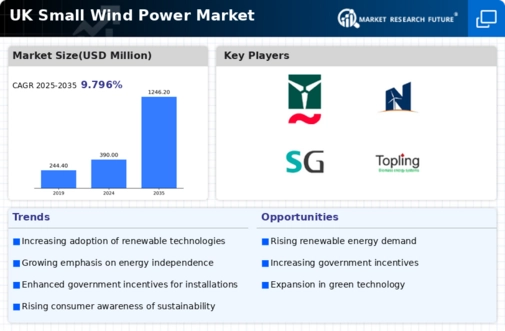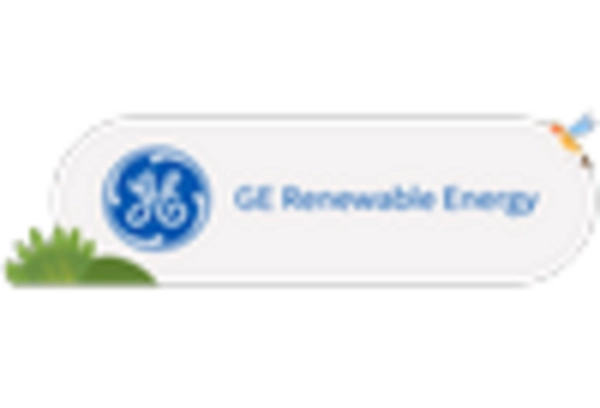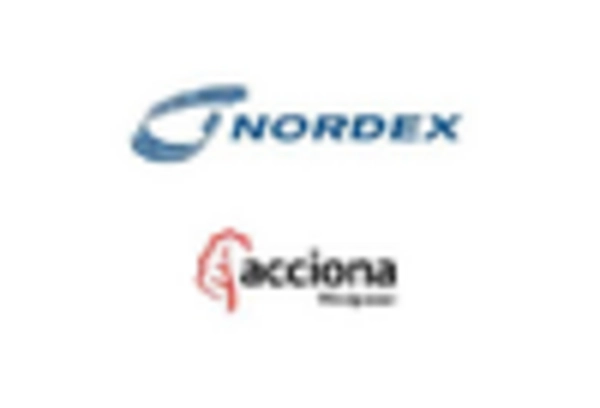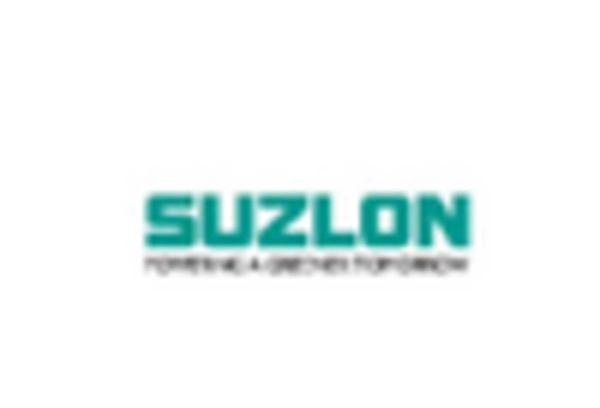Regulatory Support
The regulatory framework in the UK is increasingly supportive of renewable energy initiatives, which is positively impacting the small wind-power market. Policies aimed at reducing carbon emissions and promoting clean energy are creating a conducive environment for the adoption of small wind systems. The small wind-power market is benefiting from government schemes that facilitate installations, such as feed-in tariffs and grants for renewable energy projects. These incentives can cover up to 50% of installation costs, making small wind systems more financially accessible. As regulations continue to evolve in favour of renewable energy, the small wind-power market is likely to see an uptick in installations and investments.
Rising Energy Costs
The increasing costs of traditional energy sources in the UK are driving interest in the small wind-power market. As fossil fuel prices fluctuate, consumers and businesses are seeking alternative energy solutions to mitigate expenses. The small wind-power market offers a viable option, allowing users to generate their own electricity and reduce reliance on grid power. In recent years, energy prices have risen by approximately 30%, prompting a shift towards renewable energy sources. This trend is likely to continue, as the UK government aims to achieve net-zero emissions by 2050, further enhancing the appeal of small wind systems. The small wind-power market is thus positioned to benefit from this economic pressure, as more individuals and organizations look to invest in sustainable energy solutions.
Environmental Awareness
Growing environmental consciousness among the UK population is significantly influencing the small wind-power market. As climate change concerns escalate, individuals and businesses are increasingly motivated to adopt renewable energy technologies. The small wind-power market is seen as a practical solution for reducing carbon footprints and promoting sustainability. Recent surveys indicate that over 70% of UK residents support renewable energy initiatives, reflecting a societal shift towards greener practices. This heightened awareness is likely to drive demand for small wind systems, as consumers seek to align their energy consumption with their environmental values. Consequently, the small wind-power market is expected to experience growth as more people prioritize eco-friendly energy sources.
Technological Innovations
Advancements in wind turbine technology are playing a crucial role in the expansion of the small wind-power market. Innovations such as improved turbine designs, enhanced efficiency, and reduced noise levels are making small wind systems more appealing to consumers. The small wind-power market is benefiting from these developments, as modern turbines can now generate more energy at lower wind speeds, broadening their applicability. For instance, recent models can operate efficiently in wind conditions as low as 3 m/s, which was previously a limitation. This technological progress is likely to attract a wider range of customers, including residential and small commercial users, thereby stimulating growth in the small wind-power market.
Decentralised Energy Generation
The trend towards decentralised energy generation is significantly influencing the small wind-power market. As consumers seek greater energy independence, small wind systems are becoming an attractive option for generating electricity on-site. This shift is particularly relevant in rural areas of the UK, where grid access may be limited or unreliable. The small wind-power market is poised to benefit from this decentralisation trend, as more individuals and businesses look to harness local wind resources. With the potential to reduce transmission losses and enhance energy security, small wind systems are likely to gain traction. This movement towards self-sufficiency in energy generation could lead to increased demand for small wind installations in the coming years.
















